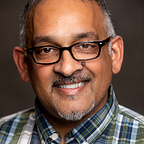Why We Need To Teach Number Theory In Math Education
Making a plea to teach a beautiful and historically captivating branch of mathematics — number theory — in K to 12 classrooms is like pleading with rock historians to include Pink Floyd’s Dark Side of the Moon in their discussions. Except, in the latter, it would be an absurd proposition.
As such, the absurdity rests with mathematics education, whose collective miscalculation of the fluency and curiosity power of number theory begins with odd and even numbers. There is so MUCH to explore here. Each of the following statements has an answer that is either Even or Odd. However, there are rich ideas contained with factual fluency— through the simple prism of odds/evens — that strengthen understanding of how these numbers behave in various realms of mathematical operations.
The essence and foundation of number theory is also the understanding of primes as being the essential building blocks of all numbers. Nowhere better was that illuminated that with Dan Finkel’s award winning Prime Climb game.
The bizarre hue and cry from ignorant politicians and media types is this notion of going back to basics. So confident is this assertion, that we even have something called “The Science of Math”.
Let me say this clearly. Anyone advocating for “Back to Basics” has zero clue of mathematics and is promoting a weak, colourless, and disconnected learning of mathematics.
Back to basics is low-hanging fruit mathematics education — being sold as some kind of bounty harvest of the best that children should learn.
70 is not only weird(the sum of its proper divisors is more than 70, but no combination of them will let you add up to 70), but it also has this cool fact.
Numberphile is a popular YouTube channel with over 4 million subscribers I wonder what their videos are about…?;)
The Shakespearean irony, if you haven’t figured it out by now, is that number theory is not only accessible to elementary children, but all that fluency that seems to be the rage these days in mathematics education, is woven inextricably to its exploration. When I taught online during the pandemic, I made certain to introduce my 5th grade students to number theory.
The fact that number theory is not a part of K to 12 math curriculum in some fashion is something that needs urgent attending to. I am sorry. It’s almost a moral imperative. Instead, we do overbaked gymnastics with fractions for what seems like years. And of course, hardly a mention of Egyptian fractions or Continued fractions.
The richer the mathematics, the richer the explorations and applications have always been.
One of my former students at The International School of Lausanne wrote a brilliant essay back in 2006.
Financial transactions are not safe and don’t exist without number theory.
How many students know that?
I could go on with examples about the vibrant colours of number theory, but really, this image sums it up.
Number theory has history, more opportunities to strengthen all mathematical fluencies — factual, procedural, conceptual, historical, and contemporary(current applications) and, most importantly, provide a lifetime of curiosity for mathematics.
Back to basics is a dog whistle for political motivation, and it’s also woefully inferior to number theory.
This recent post by Po-Shen Loh, IMO Coach for Team USA, has a a modest second paragraph that quietly sums up the power of mathematics and the power of putting that up front in mathematics education.
